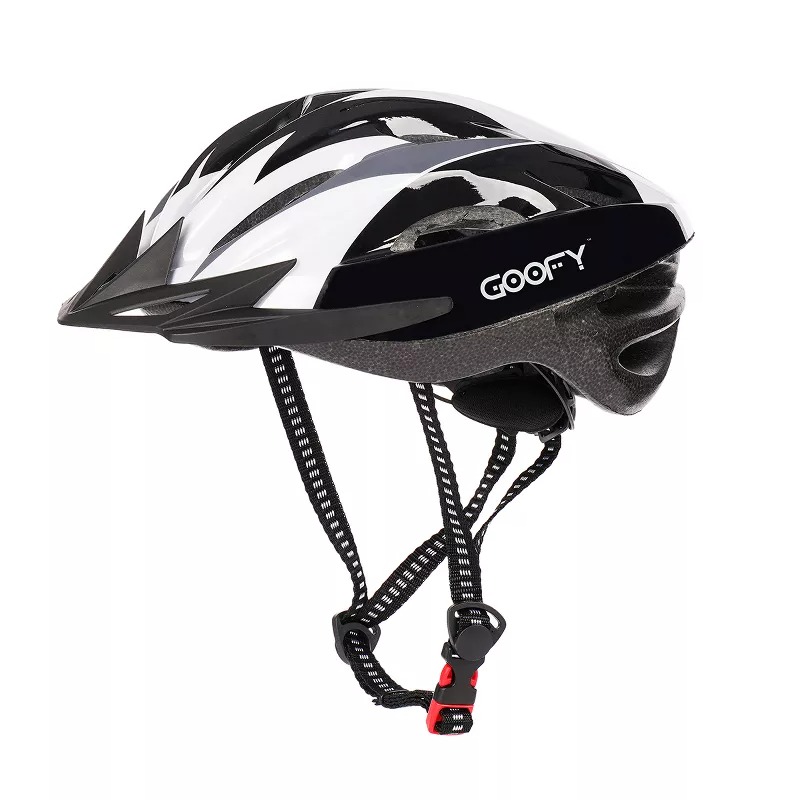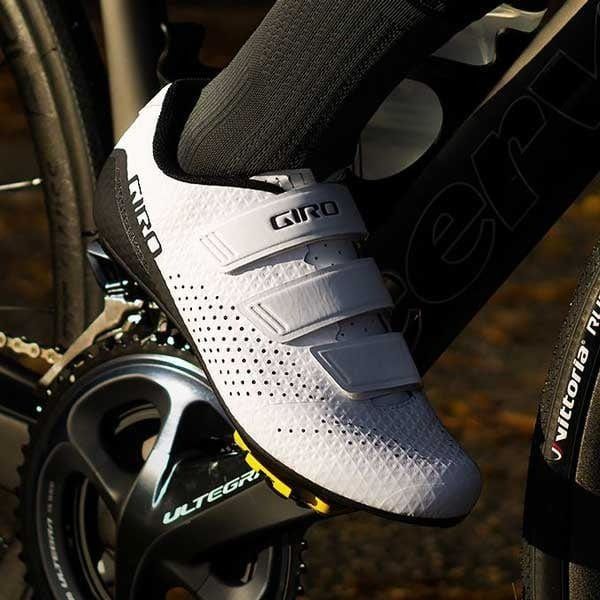History of Cycling Helmets
The journey of cycling helmets began in the late 1800s. Leather ‘hairnets’ were the first to protect heads. Cyclists in races mainly wore these. By the 1970s, helmets had hard shells. They aimed to prevent skull fractures. Now, cycling helmets blend science, engineering, and design. They employ advanced materials for maximum safety. These upgrades have led to lighter, stronger, and more comfortable helmets. Riders of all levels benefit from these advancements. Over time, the purpose of cycling helmets has remained the same: to protect. But the way they do this has changed a lot. Safety, technology, and user comfort drive modern helmet design. This evolution continues as cycling becomes more widespread.

Importance of Helmet Safety for Cyclists
Wearing a cycling helmet while riding is crucial. Unsafe riding can lead to head injuries. Helmets provide a vital layer of head protection. Every year, cycling accidents result in serious head traumas. This is where a cycling helmet comes to use. It shields the skull during falls and collisions. Research highlights the effectiveness of helmets in reducing head injury risk. The protective impact of a helmet can make a life-changing difference.
Cyclists who wear helmets are less likely to experience head injuries. In fact, helmets reduce the risk of head injury by an estimated 48% to 85%, according to studies. It is not just beginner cyclists who need helmets. Even professional riders benefit equally from their protection. Wearing a helmet also signals responsible riding behavior. It shows dedication to one’s safety and the safety of others on the road.
It is important to educate riders about helmet safety. Awareness campaigns can tell them how helmets save lives. Such initiatives can boost the adoption rate of helmet usage. They also stress the need to wear helmets correctly for optimum protection. A poorly fitted helmet can compromise its intended function. In a nutshell, helmet safety is a fundamental aspect of cycling. It is essential for all cyclists regardless of age, experience, or riding conditions.
Materials and Design Evolution
The foundation of cycling helmet safety lies in its materials and design. In the past, helmets featured simple foam liners and hard shells. Now, innovative materials have come into play. Manufacturers use expanded polystyrene (EPS) foam. This material compresses on impact, absorbing energy. Modern helmets also feature in-mold construction. This means the outer shell and foam liner bond together. They form a sturdier, unified structure. This method enhances durability and reduces weight.
Helmet design has evolved significantly as well. Classic helmets had bulky shapes. Today’s designs are more aerodynamic and lighter. They offer better ventilation to keep riders cool. Advanced contours and adjustable systems ensure a snug fit. A good fit is vital for effective protection. Designers also focus on aesthetics, creating attractive helmets that riders want to wear.
Materials like Kevlar or carbon fiber are now common in premium helmets. These materials increase strength without adding weight. They offer better protection against sharp object penetration.
Overall, in the evolution of cycling helmets, safety remains the top priority. But comfort, fit, and style have also become key factors. This comprehensive approach improves widespread helmet use among cyclists.

Impact of Technology on Helmet Safety
The rise of technology has greatly enhanced cycling helmet safety. Let’s explore some key technological advancements.
Advanced Materials: Helmets now use space-age materials. Think of carbon fiber, which is both strong and light. It absorbs impact force, protecting the head.
MIPS Technology: MIPS stands for Multi-directional Impact Protection System. It reduces rotational forces on the brain during angled impacts. MIPS is a game-changer.
Enhanced Aerodynamics: Computer-aided design improves the helmet’s shape. Better aerodynamics reduce drag. This helps in case of a fall, by positioning the helmet correctly.
Increased Ventilation: With better tech, helmets have enhanced airflow. This keeps riders cool. Overheating is less of a problem, even on hot days.
Built-in Electronics: Some helmets feature electronics, like LED lights for visibility. Others have crash sensors. They alert contacts in case of an accident.
3D Custom Fit: Imagine a helmet molded for your head. 3D printing tech makes this possible. It ensures the helmet fits perfectly, enhancing safety.
Data-driven Design: Helmets are tested using data from real-life crashes. This information guides safer designs.
In summary, technology in cycling helmets offers more safety than ever before. Riders enjoy the benefits of research and cutting-edge tech. As technology advances, helmets are likely to get even safer and smarter.
Safety Standards and Certifications
Cycling helmet safety doesn’t just stop with design and materials. Safety standards and certifications are critical. These standards ensure that helmets meet specific requirements for protection. Here’s how they impact helmet safety:
Internationally Recognized Standards: There are global standards like EN 1078 in Europe and CPSC in the U.S. These ensure helmets provide a basic level of protection.
Testing for Certification: Helmets undergo rigorous testing before certification. Tests mimic real-world impacts to check their effectiveness in protecting the head.
Continuous Updates: Safety standards evolve with new insights and technology. Regular updates to these standards mean enhanced protection for cyclists.
Consumer Trust: Certifications give riders confidence. When they see a safety certification, they know the helmet has passed important safety tests.
Market Regulation: Standards prevent low-quality helmets from reaching the market. They keep manufacturers accountable for the safety of their products.
Specialized Standards for Different Riding Styles: Mountain bikers, road cyclists, and BMX riders face different risks. There are specific standards catering to each cycling discipline.
In conclusion, standards and certifications play a vital role in the cycling helmet industry. They are the benchmarks that protect riders. Certified helmets are a must for anyone serious about their safety on the road. Each cyclist should check for these marks of safety before making a purchase.

Features of Modern Cycling Helmets
Modern cycling helmets boast features that excel in safety, comfort, and style. These aspects make helmets more appealing and increase their overall protective capability. As we delve into the features of these helmets, we will see how innovation has molded them into vital gear for every cyclist.
- Enhanced Comfort: Modern helmets come with advanced padding materials and ventilation systems. These make helmets feel light and keep the head cool.
- Adjustable Fit Systems: Helmets now have dial or slide systems for size adjustment. This ensures a secure and comfortable fit for various head shapes.
- Improved Visibility: Many helmets incorporate reflective elements or built-in LED lights. These features make cyclists more visible to others, especially in low-light conditions.
- Integrated Technology: Some helmets offer Bluetooth connectivity for music and calls. Others have GPS, and even collision detection alerts.
- Aero-dynamics: Sleek designs cut through the air more efficiently. Cyclists can ride faster with less resistance.
- Colors and Graphics: Bright colors and bold graphics on helmets are stylish. They also help riders stand out for safety purposes.
Safety, functionality, and design have never been in greater harmony. Cyclists have plenty of options, suited to various preferences and needs. Remember to look for the cycling helmet that fits well, looks good, and, above all, protects.
Smart Helmets: The Future of Cyclist Protection
The future of cycling safety is looking brighter with the introduction of smart helmets. These helmets are more than just protective gear; they’re equipped with the latest tech to keep cyclists safer on the road. Here’s why smart helmets are being heralded as the future of cyclist protection:
- Integrated Sensors: Smart helmets often have sensors that detect impacts. If a cyclist has a crash, the helmet senses it.
- Communication Systems: Built-in speakers and microphones allow for hands-free phone calls. This keeps the cyclist connected without distraction.
- GPS Tracking: Some smart helmets include GPS. They can send location data to emergency contacts if needed.
- Fall Detection: Certain models can tell if a cyclist falls. They can automatically alert emergency services or contacts.
- Rear View Cameras: Cameras can give cyclists a view of what’s behind them. This can help prevent accidents with approaching vehicles.
- Solar Charging: Solar panels on some helmets can charge built-in electronics. This makes the tech in the helmet always ready to go.
As tech advances, we’ll see helmets that can do even more. Future models may read vital signs or change their structure on impact. Smart helmets are set to redefine the standards of cycling safety. When choosing a helmet, look out for these futuristic features. They can offer enhanced protection, comfort, and convenience for riders.
Remember, while the features of smart helmets are impressive, the fit and certification are still key. A smart helmet should meet safety standards and feel comfortable. It should fit snugly to offer the best protection. With smart helmets, cyclists are not just wearing a helmet; they’re embracing a high-tech companion for safer riding.
Choosing the Right Helmet: Tips for Consumers
When it comes to cycling, safety should always be your top concern. A key element of that safety is choosing the right cycling helmet. Here are some straightforward tips to help you make the best choice:
- Measure Your Head Size: Use a flexible measuring tape to find the circumference of your head. Ensure the tape is above your eyebrows and level around your head.
- Check Safety Certifications: Look for labels showing the helmet meets international safety standards. Common certifications include CPSC or EN 1078.
- Consider the Helmet Type: Select a helmet type that matches your riding style. Road cyclists, mountain bikers, and commuters all have different needs.
- Assess the Padding: Quality padding doesn’t just add comfort. It also impacts how the helmet absorbs shock. Replace padding if it wears out over time.
- Test the Fit: A well-fitted helmet sits snugly on your head. It should not wobble or press into your head. The chin strap should allow for only a finger’s width of space.
- Look for Adjustability: A good helmet has adjustable straps and a dial to customize the fit. This ensures your helmet stays secure while you ride.
- Inspect the Ventilation: Good airflow through the helmet keeps you cool. This is especially important on long rides or hot days.
- Pay Attention to Visibility: High-visibility colors and reflective details can help others see you. Some helmets also have built-in lights.
- Consider Additional Features: Check if extras like Bluetooth or GPS tracking are important for you. Remember, these should not compromise the helmet’s primary function: protection.
By keeping these simple tips in mind, you can find a cycling helmet that offers both protection and comfort. Always remember that investing in a reliable helmet is investing in your safety on the road.


